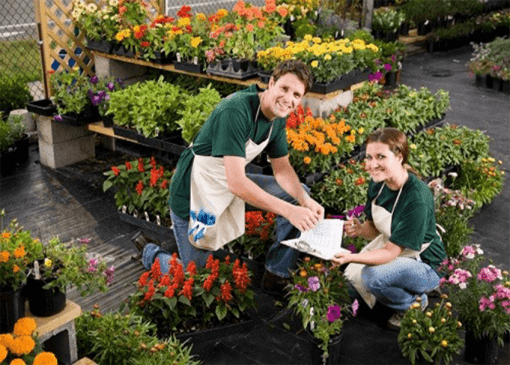Why Study this Botany B (Applied Plant Physiology) Course?
Interested in plants? Do you work or plant to work in the plant industry? Then this Applied Plant Physiology Botany Course Online will be a great help for you! This course will teach you every important thing to help you further deepen your knowledge and skills in botany. Such as the wavelengths that plants need, the nature of plant hormones, how molecules in a plant change, and much more.
Study about plant physiology and its implications for crops; post harvest management and more. This Applied Plant Physiology Botany course online explains the principles and processes of plant physiology and their practical applications. It builds on prior studies in Botany A, plant physiology or other courses from the careerline range in Agriculture, Horticulture or Science.
Best studied with Introduction to Botany.
Course Aims:
- Investigate the physiology of growth development and flowering.
- Examine the nature of phytochrome and its effect on flowering in the phytochrome reaction.
- Examine the photoperiodic responses of flowering plants to differing dark and light periods.
- Examine the effect of temperature on the onset of flowering and flower development.
- Understand and describe the causes of dormancy in seeds and plants and describe the methods of breaking dormancy.
- Understand plant associations and competition and their effects on quality and marketable yield.
- Explain the process of respiration in plant cells and its effect on post-harvest storage and transportation of crops.
- Describe physiological processes in post-harvest crops in relation to the storage conditions.
- Investigate the effect on plants of endogenous and synthetic growth regulators.
- Understand risk assessments relevant to plant growth manipulation.
Lesson Structure
- Introduction
- The flowering response
- Genes control flowering
- Physiological age
- Minimum leaf number
- Photoperiodism
- Terminology
- Light sensing systems
- Blue light responses
- Red light responses
- Other light responses
- Phytochrome
- Photoreceptor forms: Pr, Pfr
- How molelcules change
- Relevance to commercial horticulture
- Controlling light
- Terminology
- Light
- Measuring light
- What wavelengths do plants need
- Typical photoperiod responses
- Photoperiodic responses in seasonal flowering plants
- Photoperiodic classification of plants: short day plants, long day plants, day neutral plants
- Detection of photoperiod
- Critical photoperiod and flowering
- Research facts
- Other photoperiodic effects
- Terminology
- Stages in flower bud growth
- What can affect flower bud initiation
- Differentiation
- Development
- Anthesis
- Effect of temperature on growth and flowering
- Vernalisation
- Thermoperiodism
- Research reports or reviews of specific plants
- Terminology
- Dormancy in plants
- Abscisic acid and dormancy
- Breaking dormancy
- Dormancy in seeds
- Factors affecting seed dormancy
- Breaking seed dormancy
- Terminology
- Introduction
- Competition
- Parasitism
- Coevolution
- Mutualism
- Plant herbivore and pathogen interactions
- Crop spacing and crop yields
- Crop canopy and plant density
- Impact of weeds
- Protected environments
- Greenhouses
- Shadehouses
- Respiration
- Glycolysis
- Aerobic respiration
- Anaerobic respiration
- Bioluminescence and Fluorescence
- Post harvest respiration
- Terminology
- Effect of growing conditions on post harvest life
- Controlled storage conditions: temperature, atmosphere, humidity
- Normal atmospheric conditions
- Controlled and modified atmospheres
- Effect of oxygen levels Effect of carbon dioxide levels
- Ethylene
- Controlling ethylene levels
- Modified Atmosphere Packaging
- Commodity transport
- Retailing and shelf life
- Nature of plant hormones
- Auxins: IAA, IBA, NAA
- Gibberellins: natural and synthetic
- Cytokinins: over 130 different types
- Abscisic acid
- Ethylene
- Other hormones: anti auxins, growth inhibitors, growth retardants, defoliants, growth Stimulators, non standard hormones
- Controlled ripening and degreening
- Waxing
- Commercial risks
- Human health and safety risks
- Plant pathology risks
- Ecological risks
- Genetic modification
- Benefits
- environmental hazards
- Human hazards
- Terminology
Enrol Now
- Experienced Tutor support
- Certificate sent to you
- Online study (Printed notes available)
- Self paced - no set timetable
- 12 months to complete course
From: $25.00 / week for 26 weeks
Get a Free Info Pack!











